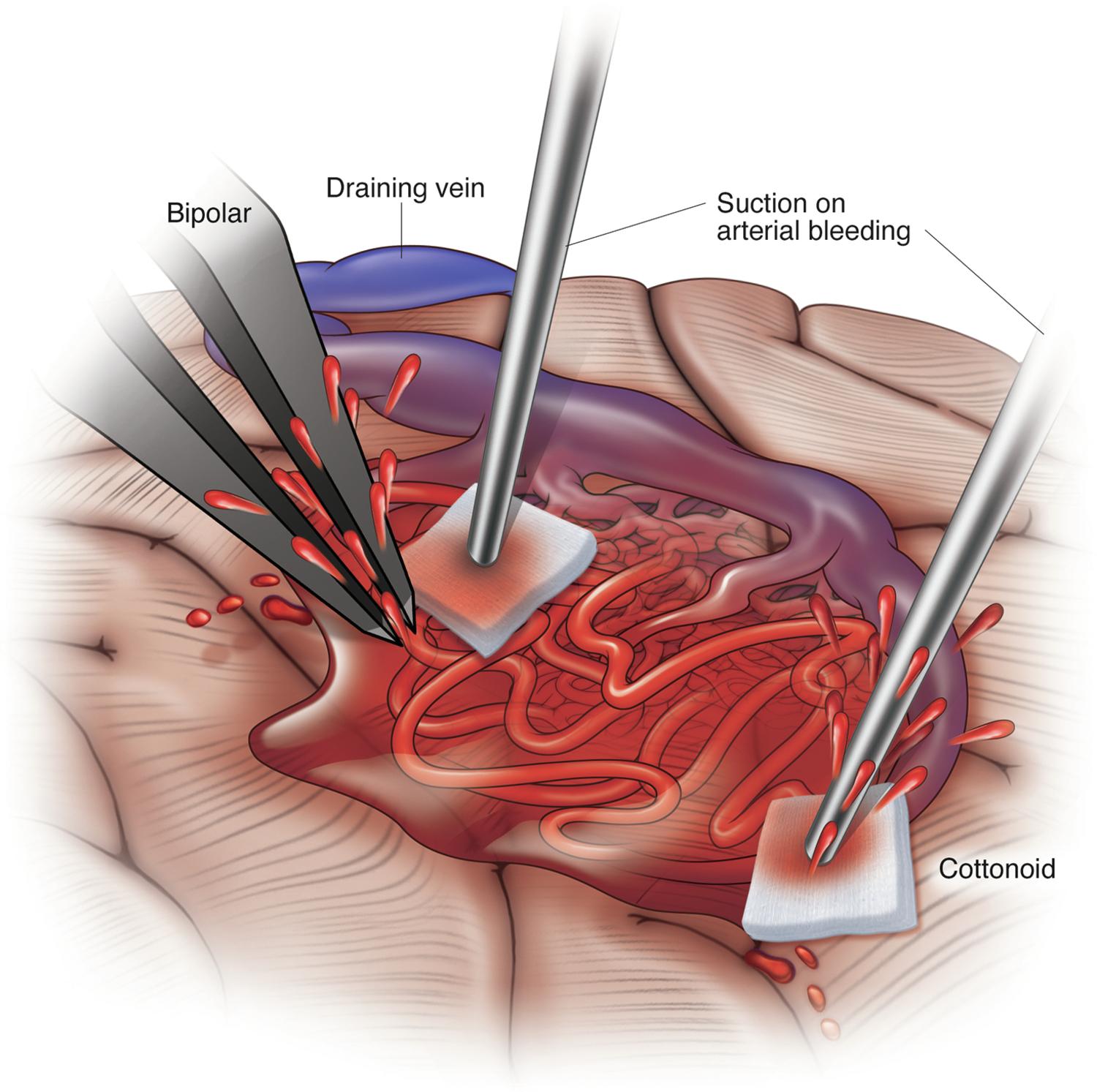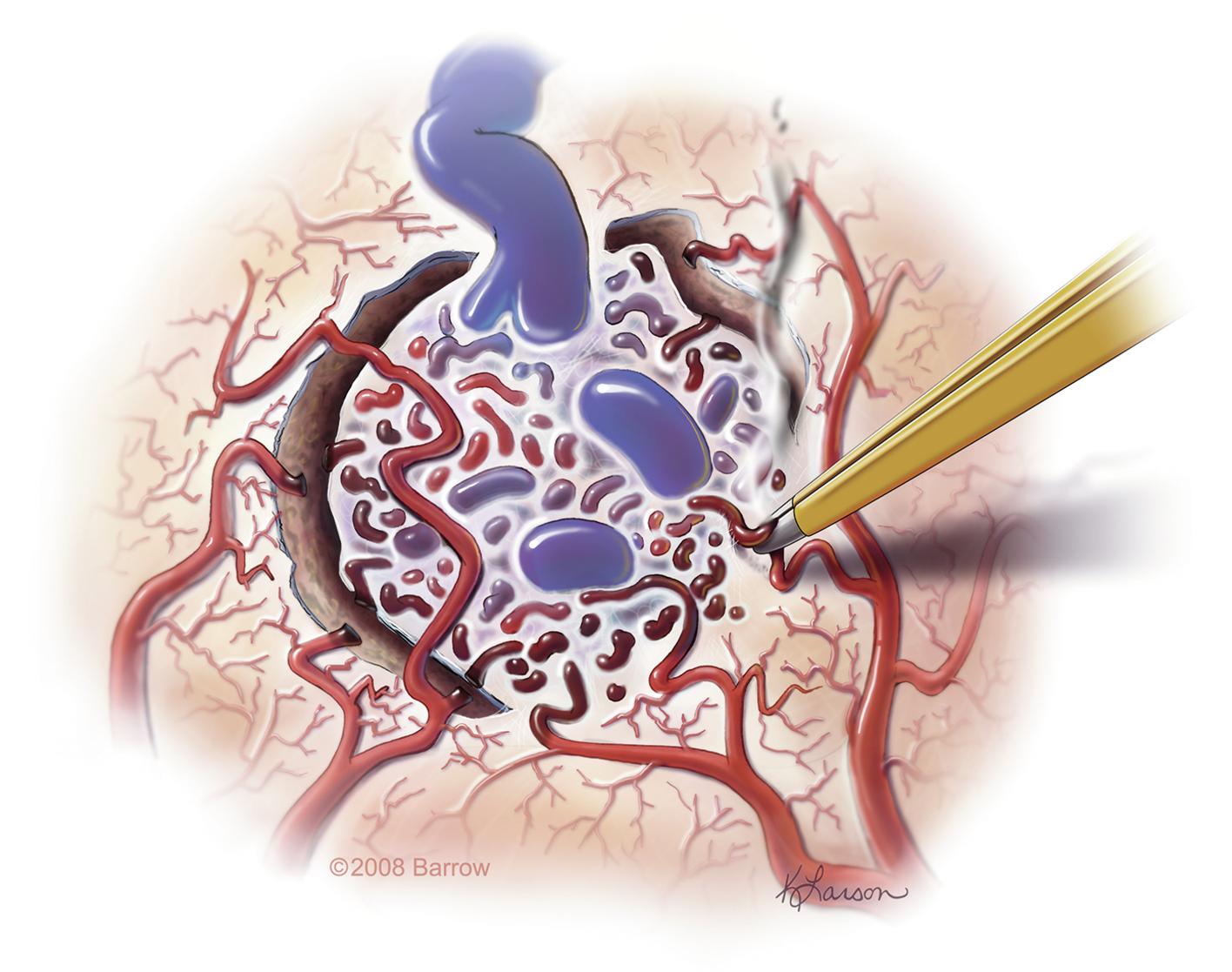Physical Address
304 North Cardinal St.
Dorchester Center, MA 02124
We thank the staff of Neuroscience Publications at Barrow Neurological Institute for assistance with manuscript preparation.
Intraoperative bleeding from an iAVM is best categorized as arterial, venous, or nidal.
Arterial bleeding is best managed with bipolar cautery directly at the source.
Venous injury can occur if a main draining vein is mistaken for an artery, so careful study of the vessel and attention to preoperative imaging are imperative.
Nidal bleeding, if mild to moderate, can be controlled with pressure or the “iron thumb” technique.
Torrential nidal bleeding must be addressed with “commando” resection of the AVM.
Intraoperative rupture ( Fig. 37.1 ) is the most feared complication in the resection of intracranial arteriovenous malformations (iAVMs). Ultimately, the best management of intraoperative rupture is to proceed in a manner that prevents a rupture from occurring. Rupture prevention involves the careful study of preoperative images to generate a mental map of the malformation. The neurosurgeon must be aware of the location of feeding arteries, the venous drainage system, and any high-risk features such as nidal aneurysms and venous outflow obstruction. If preoperative embolization is planned, the changes to the structure and hemodynamics of the AVM must be considered. At surgery, the craniotomy should be large enough to facilitate control of the entire lesion. Making a small craniotomy for aesthetic reasons can add unneeded difficulty and patient morbidity if bleeding occurs. Once the surgery is underway, the neurosurgeon must maintain meticulous technique throughout the entirety of the resection. Arachnoid membranes are sharply dissected. Where parenchymal transgression is required, the boundary is kept clean. At each stage, small vessels are coagulated and cut, maintaining hemostasis before proceeding to further dissection ( Fig. 37.2 ). All the while, arterialized veins and hypertrophic arteries must be precisely differentiated. Despite the surgeon’s preparation, skill, experience, and best intentions, every AVM generates some bleeding. Understanding the source of the bleeding is imperative for both maintaining control over the resection and preventing complications. In this chapter, we discuss the surgical techniques to manage three types of bleeding that can occur with AVM resection: arterial bleeding, venous bleeding, and AVM nidal rupture.


Arterial bleeding originates from the arterial feeders located within the parenchyma, ependyma, or subarachnoid spaces. Control of bleeding can be established using a combination of suction and cottonoid patties. Pressure is applied to the patty using the suction tip. This technique achieves three functions at once. In the case of an unidentified arterial source, the pressure is often enough to occlude the source and act as a dynamic retractor to show the local anatomy while the suction removes blood from the field. Once the source is identified, the artery is immobilized and cauterized proximally. Deep perforators (i.e., “red devils”) often have very thin muscular media, making them poorly responsive to coagulation. These arteries require transgressing more deeply into the white matter, where a more substantive artery is found, or using AVM microclips if bipolar cautery is not proving to be effective.
Become a Clinical Tree membership for Full access and enjoy Unlimited articles
If you are a member. Log in here